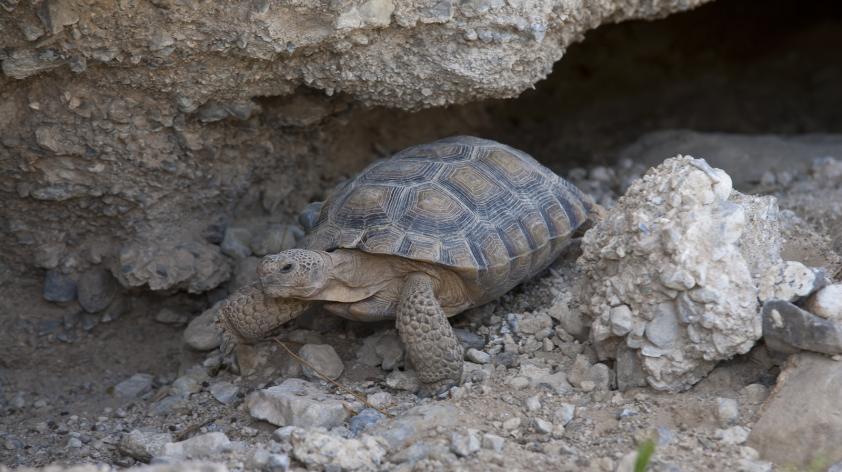
Say “Ah”
Tortoise 5726 lives in a large patch of the Mojave Desert west of the I-15 and south of Las Vegas in Nevada. 5726 is an adult female that was released to this area from the Desert Tortoise Conservation Center 14 years ago, in 2003.
She was recently sighted and evaluated as part of a larger study that the Disease Investigations Group is working on in collaboration with the U.S. Fish and Wildlife Service (FWS) Desert Tortoise Recovery Team.
The FWS field team is trained in spotting these well camouflaged iconic reptiles in their natural habitat. They are also well trained in performing health assessments and collecting samples. The training is important to minimize stress on an animal. Touching and picking up a wild tortoise can, for example, cause it to void which means it empties its bladder of fluids – not something you want to do in the desert during a drought.
Tortoise 5726 is one of many tortoises of which we received biological samples for the study. We have boxes and racks full of vials in the freezer, each carefully labeled. While the Molecular Diagnostics Lab team at the Beckman Center is busy processing the samples for more health-related information the tortoises are most likely tucked away in their burrows brumating through the winter.
Working in a molecular lab requires focus and attention to detail. The researchers cannot see the molecules they are working with or the DNA they are extracting. To a viewer it may look like they are handling tiny clear droplets of fluids with precision instruments such as pipettes and using fine filters and centrifuges to separate out the DNA from oral swab samples. This takes several steps and a well planned out workday. Once the DNA is extracted it is used as a template for the PCR reaction.
Testing oral swabs will give us an idea of how prevalent two of the causative agents of upper respiratory tract disease are in the desert tortoise population namely Mycoplasma agassizii and M. testudineum.













